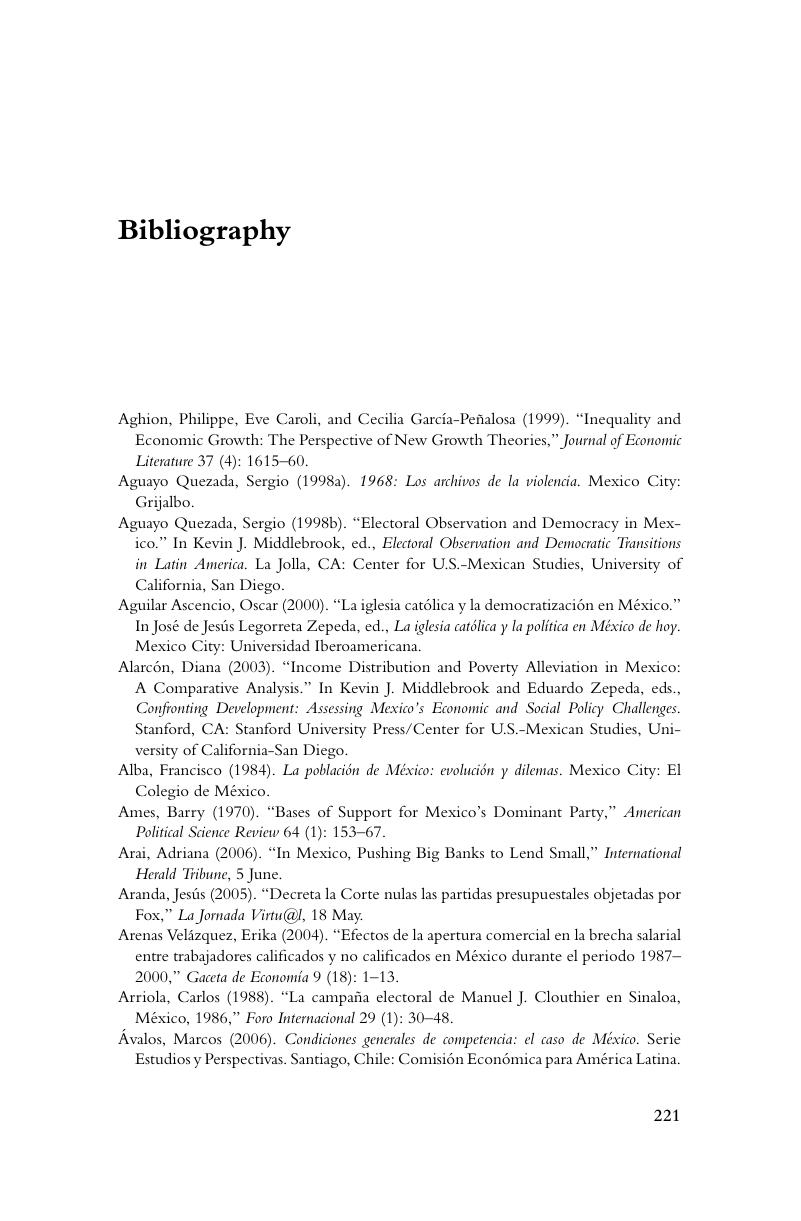Book contents
- Frontmatter
- Contents
- List of Figures
- Acknowledgments
- Abbreviations and Acronyms
- 1 The Second Mexican Revolution: Economic, Political, and Social Change Since 1980
- 2 Mexico Before 1982: The Political Economy of Authoritarian Rule
- 3 The Causes and Consequences of Free Trade
- 4 The Mexican Banking System: The Politics and Economics of Financial Underdevelopment
- 5 The Transformation of Mexican Politics
- 6 Health, Education, and Welfare in Mexico Since 1980
- 7 Democracy and Development in Mexico: Future Challenges and the Legacies of Authoritarian Rule
- Bibliography
- Index
- References
Bibliography
Published online by Cambridge University Press: 05 September 2012
- Frontmatter
- Contents
- List of Figures
- Acknowledgments
- Abbreviations and Acronyms
- 1 The Second Mexican Revolution: Economic, Political, and Social Change Since 1980
- 2 Mexico Before 1982: The Political Economy of Authoritarian Rule
- 3 The Causes and Consequences of Free Trade
- 4 The Mexican Banking System: The Politics and Economics of Financial Underdevelopment
- 5 The Transformation of Mexican Politics
- 6 Health, Education, and Welfare in Mexico Since 1980
- 7 Democracy and Development in Mexico: Future Challenges and the Legacies of Authoritarian Rule
- Bibliography
- Index
- References
Summary

- Type
- Chapter
- Information
- Mexico since 1980 , pp. 221 - 240Publisher: Cambridge University PressPrint publication year: 2008

